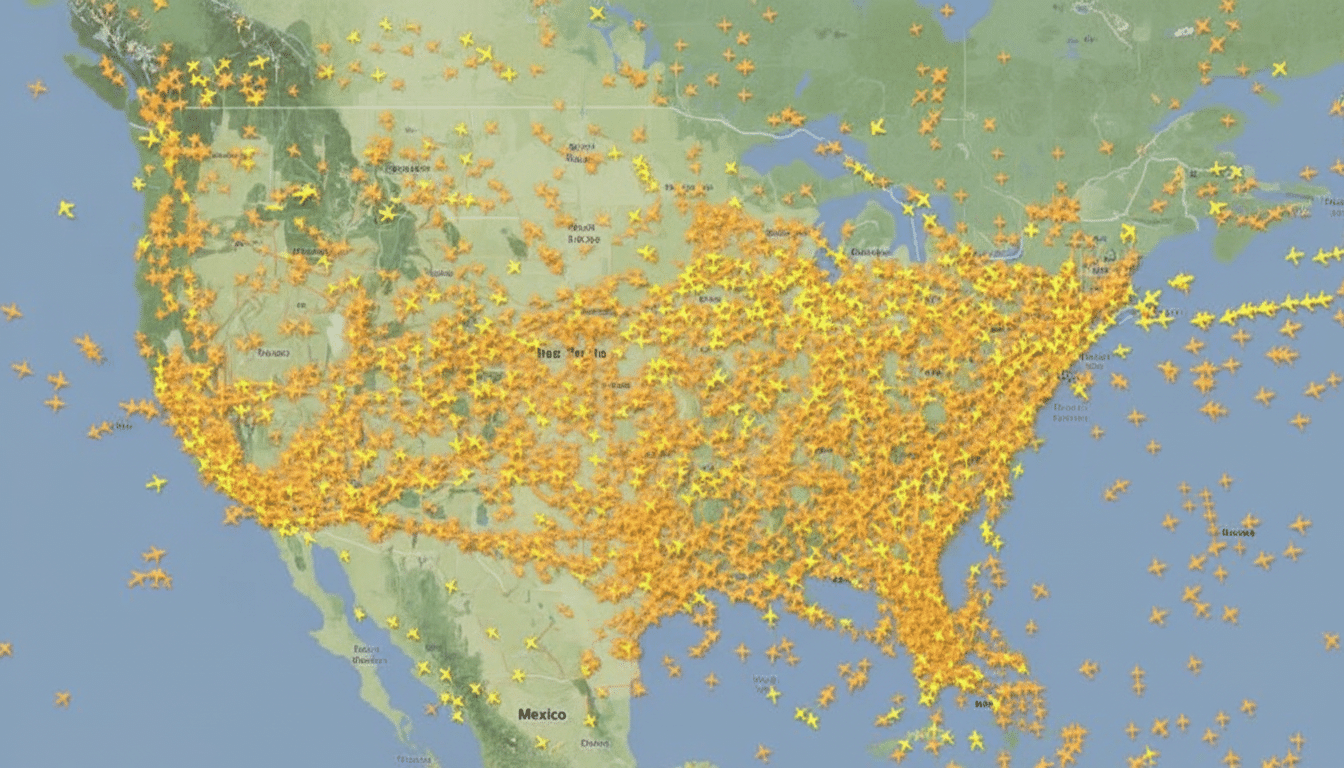Early signs suggest it will be a relatively uneventful Thanksgiving for travelers flying in the United States, with delays and cancellations generally tame so far Tuesday at major U.S. hubs as the holiday rush begins. “What we see is the system holding up very well,” says Airlines for America spokeswoman Alison McAfee, adding that while she didn’t want to declare victory yet, airlines are better prepared than a few years ago when operations were stretched thin and weather was more severe this time of year. “I think people have learned from some mistakes,” she says. The calmer conditions come after what has generally been mild weather across much of North America in recent weeks despite blips here and there. In other words: It’s not cold. When temperatures plummet, deicing fluid isn’t as effective on wings or components attached to them because it freezes like anything else if left too long in low degrees.
What Recent Flight and TSA Data Reveals So Far
FlightAware and Flightradar24, industry trackers, show that only a tiny fraction of flights have been canceled across the country and a manageable range of delays where congestion has always settled. That falls in line with historical averages: Data from the Bureau of Transportation Statistics pegs the mean November cancellation rate around the low single digits, and an early readout for this year appears to be toward making it fairly well out on that spectrum.

TSA says that it is seeing higher than normal numbers of travelers at thousands of screening lanes, and security waits are under airlines’ standards for time. Airlines for America has pointed to higher “completion factors” into the holiday period, a measure of how many scheduled flights are completed — suggesting that airlines put more slack into their timetables and parked some marginal flying to lessen chokepoints.
Busiest Hubs and Key Thanksgiving Weather Watch
The swing factor every Thanksgiving is the weather, and the main place to watch this year will be in the Upper Midwest and Great Lakes. The National Weather Service said that brief, fast-moving lake-effect snow and strong winds could prompt ground delay programs during periods of reduced visibility. That translates into watch points that include Chicago O’Hare and Midway, Minneapolis–Saint Paul, Detroit and Cleveland, as well as the potential for ripple effects throughout connecting banks all over.
Larger coastal hubs are doing relatively well elsewhere. Airports in the New York area may experience transient flow constraints with low clouds and crosswinds, while San Francisco can slow when morning marine layers arrive. Denver and Salt Lake City are frequently on time unless snow rates spike, and early operations at those airports have been consistent.
For a bird’s-eye view, the Misery Map from FlightAware is a great way to see where delays and cancellations are snowballing across the day — and if your connection is downstream of an affected airport.
What’s Behind the Delays During Holiday Travel
Carriers front-loaded resilience: tighter collaboration with the FAA’s Air Traffic Control System Command Center, a few more spare crews standing by in reserve, and schedule smoothing that spread peak banks out by a few minutes to mitigate gate and runway congestion. Some airlines also traded out a few regional jets for larger mainline planes to combine demand without increasing flight counts — fewer moving parts that can go wrong.

The reverse side of that coin is that better deicing preparedness and extra ramp staffing at northern hubs have shortened some of the longest-running cold-weather pain points on the airport end. And demand is high, but the fleet is better aligned to it than in the first several years after the pandemic began, when supply chain hiccups and pilot shortages compounded disruptions.
Tracking Your Flight in Real Time for Peace of Mind
Make your airline’s app (or mobile website) your system of record; it will push through gate changes, boarding times and reaccommodation options first. Cross-reference with FlightAware or Flightradar24 to determine where your inbound aircraft is and whether your route is part of any FAA traffic management initiatives (like ground stops or miles-in-trail spacing). If you notice that your inbound aircraft is being held at a restricted airport, ask to be rebooked on the next earlier flight with a more robust connecting window.
If you happen to be traveling through known pinch points in the Great Lakes, give yourself a little extra buffer. Even a pad that lasts 20–30 minutes can mean the difference between a peaceful run and an accidental overnight.
If You’re Disrupted, Know Your Air Travel Rights
If a cancellation or substantial delay is the airline’s doing (think crew availability, mechanical issues and schedule changes), you can often request a refund or compensation. A page of the U.S. Department of Transportation’s Airline Customer Service Dashboard describes what each carrier agrees to dispense during “controllable” disruptions, such as meal vouchers, hotel rooms and rebooking on the next available flight.
Get back to it quickly if your plans change. Same-day availability on alternate flights and rental cars disappears quickly during holiday peaks. If your schedule depends on an endangered hub, inquire about rerouting through a steadier corridor — even if it means one extra stop; reliability frequently trumps the shortest route during busy travel days.
Bottom Line for Thanksgiving Week Air Travelers
The Thanksgiving air travel scene is looking up, with few disruptions and a strong operational stance by airlines and airports. Monitor weather in the Great Lakes and your inbound aircraft, and lean on your airline app to stay a step ahead. With a little bit of buffer and some flexibility, most travelers should be able to get to the table on time.

